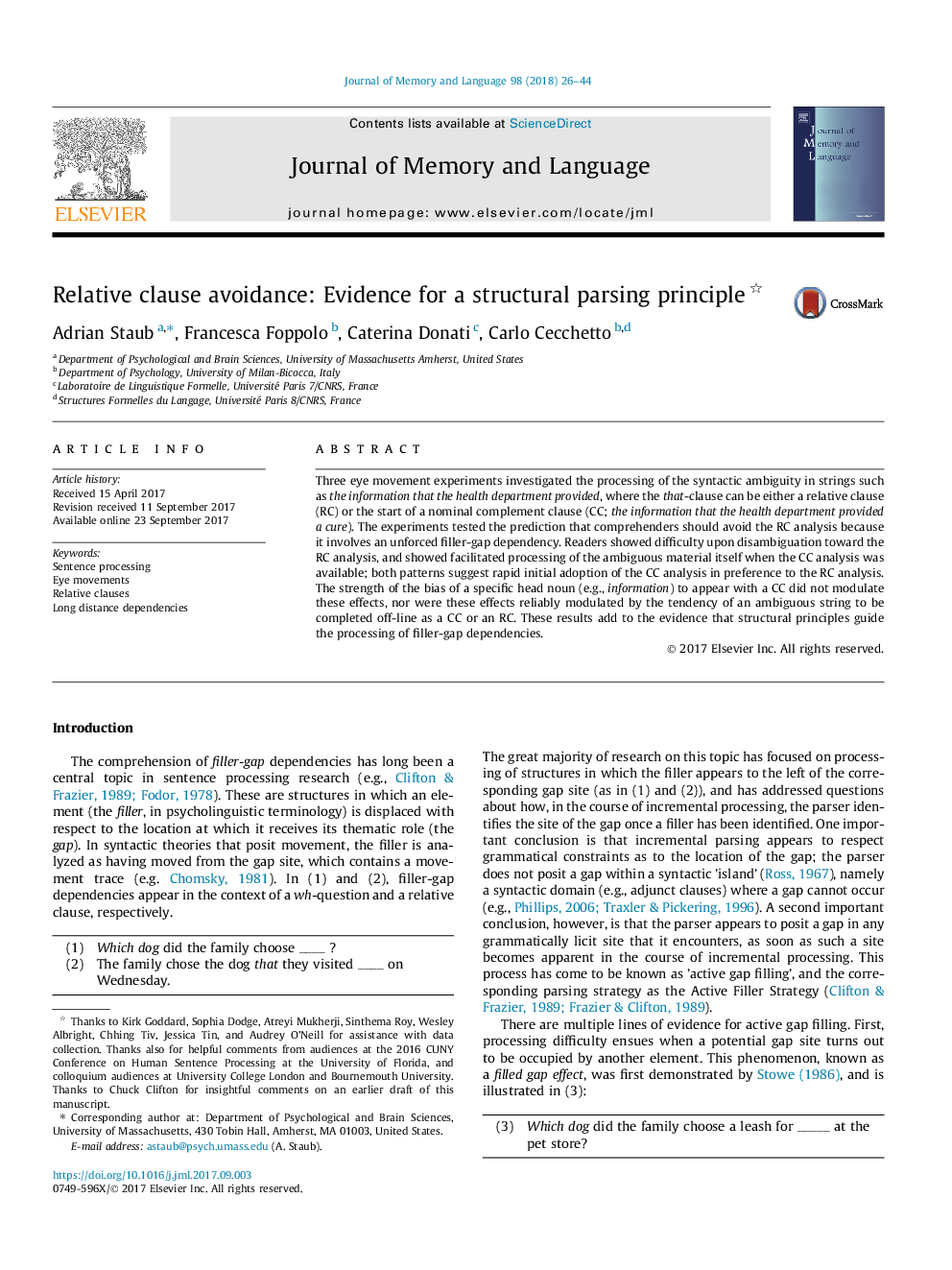| Article ID | Journal | Published Year | Pages | File Type |
|---|---|---|---|---|
| 5042482 | Journal of Memory and Language | 2018 | 19 Pages |
â¢Three experiments examine processing of relative/complement clause ambiguity.â¢Readers initially adopt the complement clause analysis.â¢This preference is not modulated by lexical biases, or by completion preferences.â¢The results suggest that comprehenders avoid positing filler gap dependencies.
Three eye movement experiments investigated the processing of the syntactic ambiguity in strings such as the information that the health department provided, where the that-clause can be either a relative clause (RC) or the start of a nominal complement clause (CC; the information that the health department provided a cure). The experiments tested the prediction that comprehenders should avoid the RC analysis because it involves an unforced filler-gap dependency. Readers showed difficulty upon disambiguation toward the RC analysis, and showed facilitated processing of the ambiguous material itself when the CC analysis was available; both patterns suggest rapid initial adoption of the CC analysis in preference to the RC analysis. The strength of the bias of a specific head noun (e.g., information) to appear with a CC did not modulate these effects, nor were these effects reliably modulated by the tendency of an ambiguous string to be completed off-line as a CC or an RC. These results add to the evidence that structural principles guide the processing of filler-gap dependencies.
